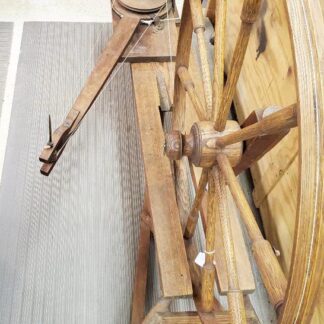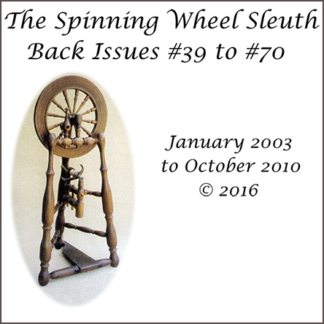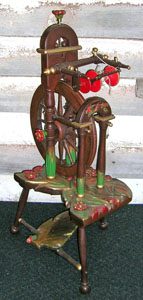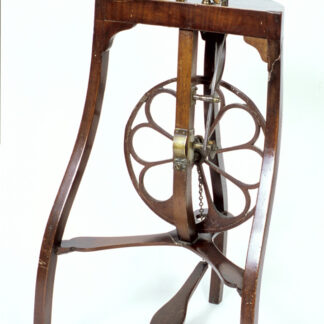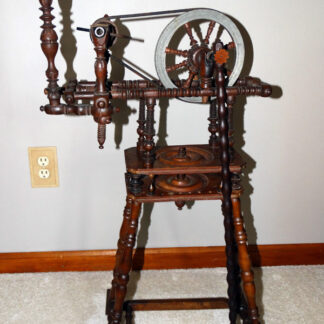Description
Highlights From This Issue
In this issue we learn how a spinning-wheel maker in Pennsylvania was discovered when researchers were studying another topic. A small European parlor wheel with unusual characteristics is described. A combination of three tools, two from the 19th century and one from the 21st, are used to accurately and efficiently measure handspun yarn. The Estonian origin of one 19th-century tool is explained.
At Last: A Spinning-Wheel Maker for the Mahantongo Valley, PA
For years Christian and Johannes Zinzendorf hoped to find a spinning-wheel maker in the Mahantongo Valley of central Pennsylvania but were unsuccessful. Then while researching the everyday 19th-century furniture used in that area for a forthcoming book, they discovered him: Heinrich Scheddel. They explain how they found him and what they know about him.
Precious Small European (?) Wheel
Bonnie Weidert was asked by her friend Kathy Rug to advise her about a small, delicate wheel that she had found. While similar to some parlor wheels, it has some unusual features. She describes them and where she thinks it came from.
Something “Old” and Something “New” for Measuring Homespun
Looking for an effective and accurate way to measure the yarn that his wife Joanne spun when they gave demonstrations, Tom Blodgett combined two old tools and one new one. The 19th-century reel he has is unreliable, but he discovered that along with an app that measured revolutions on a smart phone, he could obtain an accurate measurement. Adding a small hand tool, called a niks, that guided the thread to protect the spinner’s hand, was a bonus.
The Niks, an Intriguing Estonian Textile Tool
In the course of her research on textile tools in Estonia, Mathilde Lind discovered the niks. These small hand tools are used while winding balls or skeins of yarn and protect the spinners’ hands. She explains how she discovered them in old pictures and text and how she recreated one.











